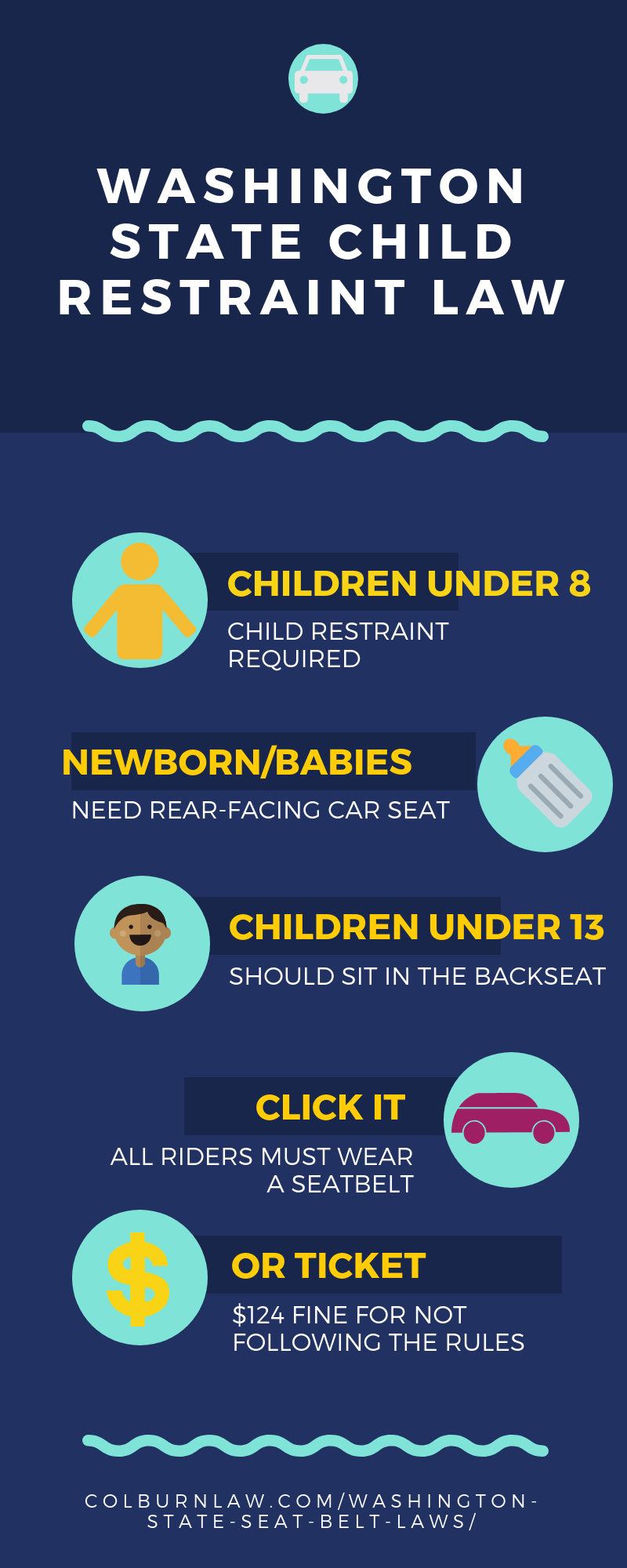
Washington State Seat Belt Laws & Legislation
Colburn Law
Posted in Car Accidents on June 7, 2018
The auto industry has made leaps and bounds in terms of passenger safety over the years. Today’s vehicles have advanced safety features such as automatic braking and side airbags. One of the first vehicle safety features in existence, however, remains one of the most important: the seatbelt. According to the National Highway Traffic Safety Administration, seatbelt use saved at least 14,668 lives in 2016. Despite the importance of wearing a seatbelt, about 27.5 million people don’t. Washington law offers further incentive to buckle up.

Washington State Seatbelt Laws
Washington legislation states all people 16 years and older operating or riding in motor vehicles must wear seatbelts. All vehicle occupants must securely fasten and properly adjust seatbelts while riding. No one may operate a motor vehicle unless that person has first properly secured all children under the age of 16 in either safety belts or approved child restraint devices. The seatbelt statute is a primary law in Washington, meaning officers need no other reason to conduct a traffic stop.
Proper use of a seatbelt means sitting straight in the seat, with the shoulder belt across the center of the chest. Wrapping the shoulder strap around the arm or behind the back is not proper use. The lap belt should sit snugly across the hips, below the stomach. Your seatbelt should not have any extra slack. Wearing your seatbelt the wrong way drastically reduces its ability to protect you from injuries in an accident.
Violating Washington’s seatbelt laws is a traffic infraction that could result in a fine up to $124 per person. Note, however, that Washington’s laws do not see failure to wear a seatbelt as negligence. The law states that failure to comply with the seatbelt law does not constitute negligence, nor can it serve as evidence of negligence in a civil action.
Car Seat Safety in Washington State – Child Restraint Law [UPDATED for 2020]
Like all states, Washington cares deeply about child safety. It has enacted special child passenger safety laws regulating what caretakers can and cannot do when transporting minors in motor vehicles. The law requires that the driver of the vehicle keeps all child passengers properly restrained according to the guidelines of the law. Breaking these guidelines could result in fines and penalties, as well as liability for child injuries in the event of an accident. The guidelines are:
- All children under the age of eight (unless the child is taller than 4 feet 9 inches) must use a child restraint system. The system must comply with the U.S. Department of Transportation standards. Caretakers must properly secure the system in the vehicle according to manufacturer instructions.
- Children under 2 years old must be properly secured in a rear-facing car seat.
- Children 2-4 years old must ride in a car seat with a harness (rear or forward facing).
- Use a rear-facing infant car seat for newborns and small babies (generally up to eight or nine months). Face the car seat forward as the child grows. Once the child reaches the age and height minimum, transition to a booster seat. Keep the child in a booster seat until he or she is tall enough to correctly wear a standard seatbelt without it.
- Drivers who are transporting children under the age of 13 must put them in the back seat whenever possible in Washington. If the back seat is full, only put a child in the front passenger seat if the corresponding airbag is off. Otherwise, the airbag could pose a serious risk of harm to the child.
Child passenger safety is a critical topic to every parent, caretaker, and driver. Car accidents are tragedies that injure and kill children every year, if you have been involved in a wreck – call Colburn Law and speak to a car accident attorney in Seattle today. In 2015, 663 children under the age of 13 died in fatal motor vehicle accidents in the United States. These deaths are often preventable when the child is properly secured in the vehicle. Obey the law and safety best practices to give your child his or her best chance at surviving a collision.



